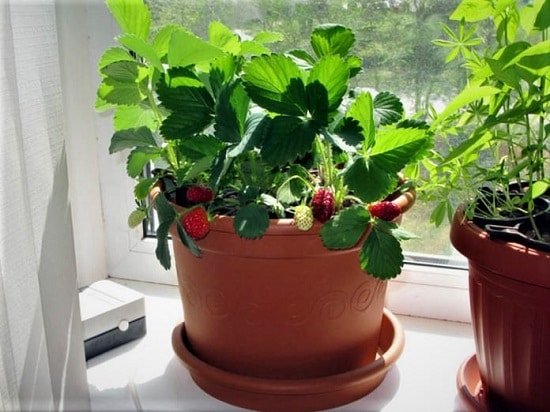Growing Alpine Strawberries Indoors - The Secrets to Successful Indoor Cultivation
Alpine strawberries are easy-care, attractive perennials that look beautiful in rock gardens, perennial borders and window boxes and planters. They are also great for edging garden beds and planting in containers.
They don't produce runners like traditional strawberries, and are more compact, making them a good choice for small spaces.
1. Invest in a Good Grow Light
Alpine strawberries are relatively low-maintenance plants. However, they still need a good amount of care to keep them healthy and productive. They prefer a humusy loam soil with plenty of organic matter, but they can also be grown in containers. To maximize yields, fertilize alpine strawberries in the spring with an organic granular fertilizer and water regularly.
To grow alpine strawberries from seed, start seeds indoors in late winter. The seeds may take several weeks to germinate, but once they do, the plants will grow quickly. It's also possible to purchase bare-root or potted alpine strawberry transplants from garden centers or specialty nurseries. These are a great choice since they'll be more mature than when planted from seed and will produce fruit much faster. Just be sure to gradually harden off the transplants before putting them in your garden. You should also consider laying down a layer of mulch to help conserve moisture. Ideally, this should be made from a material like compost or shredded leaves.
2. Make Sure Your Plants Have Plenty of Water
Alpine strawberries, which are also known as woodland or fraises des bois, produce a steady stream of gumdrop-sized fruit from early summer until fall. They're perfect for filling a window box or planter, edging a perennial garden, adding color to a rock garden or lining a pathway.
Like all strawberry plants, they're heavy feeders that require a
nutrient-rich soil to thrive. To encourage their growth, add a layer of mulch,
such as a well-rotated compost or HealthiStraw, around the base of each plant. You may also find your ideal details about indoor strawberries on madaboutberries.
Water your plants frequently, but be sure to test the soil for dryness before doing so. You want to avoid over-watering your plants, especially when they're dormant in the winter and fall as part of their natural life cycle. Watering in the morning is preferable because it gives any excess wetness a chance to evaporate throughout the day, which reduces the risk of disease. When watering, aim for a light misting, which allows the soil to soak up the water without becoming saturated.
3. Keep Your Plants Healthy
Whether you're planting alpine strawberries from seeds or nursery starts, it's important to keep them healthy so they will thrive in your garden. This will ensure they're ready to produce abundant fruit come summertime!
Alpine strawberry plants, also known as wild or woodland strawberries, are big bursts of flavor in tiny packages. They're perfect for adding to your garden, and they even work well in containers.
To keep your alpine strawberries healthy, water them frequently and make sure they get enough sunlight. Also, be sure to fertilize them regularly with a well-balanced liquid plant food.
Another great way to keep your alpine strawberries healthy is by hand-pollinating them. You can do this by using a paintbrush or cotton swab to transfer pollen between the male and female parts of the flower.
4. Keep Your Plants Clean
While growing Alpine strawberries indoors, it's important to keep the plants clean. This will help prevent pests like aphids and spider mites from sucking the life out of your precious strawberries. If you do come across any pests, spray the plants with a fungicide or insecticide.
Keeping your strawberries clean can also help to extend their shelf-life. To do this, make sure to remove any berries that look rotten or damaged. You should also keep the strawberries in a sealed container, as this will help to increase their longevity.
Alpine strawberries are a great addition to any garden. They produce gumdrop-sized berries all summer long and are very easy to grow. They are perfect for lining a path, adding color to a rock garden, or even edging a perennial border. And because they don't produce runners like regular strawberries, they stay neat and tidy. Just remember that they require a lot of sun to thrive, so be sure to plant them in a sunny location.

Comments
Post a Comment